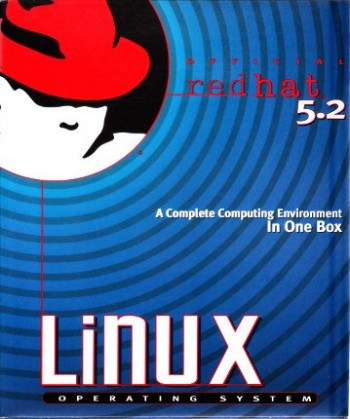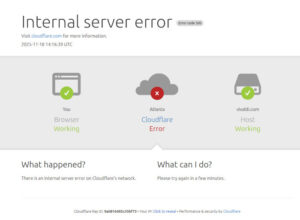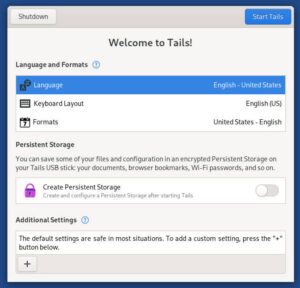FOSS Week in Review
While Facebook and Google work to better identify you by your typing skills and Red Hat counts the bucks from its best ever year, Ubuntu finally makes it possible to launch from the bottom.
If you depend only on mainstream tech media’s coverage of FOSS, you might be excused for thinking that the biggest news of the week revolved either around Ubuntu’s new summer home in the world of BSD — which isn’t a Canonical project by the way — or Microsoft’s open sourcing of every scrap of code it can find that might benefit Microsoft if it were open sourced.
In my not-so-humble opinion, both of these stories were yawners. Of course somebody’s attempted to create a BSD *buntu. There are already Ubuntu flavors for every single desktop environment known to mankind, as well as a few DEs that are figments of Canonical’s imagination, so where else was there to go but to another operating system? What’s next? Given the way Ubuntu has been cozying up to Microsoft, I’m expecting Ubuntu for Windows.
As for Microsoft’s continuing open sourcing? There’s nothing new here, move on. When Redmond loves Linux and open source enough to quit suing open source projects over patents it claims it has — that will be news.

At first glance, this might seem to the the type of story that’s of most interest to Wall Street and the tech business sector, but it also should be important news to those who advocate free tech. Red Hat is a huge and powerful force standing in the corner with those who believe in software freedom — and in this day and age, we the people can use all the support we can get.
I get it that the company does some things many people don’t like, but none of us always agree with our mothers either. When all is said and done, Red Hat has demonstrated it respects the “free” aspect of FOSS, where other tech giants only see the “open source” part.
This news also sends a note to those few who might still be on the proprietary-is-the-only-way-to-go bandwagon that OSS and FOSS are the development models of the future.
Meanwhile, Canonical is still waiting to show any kind of profit.
While the Ubuntu-dances-with-BSD story was getting everyone’s attention this week, another Ubuntu story barely got notice. It seems that the developer and designer folks at Ubuntu have been attentively listening to their user base and responding as quickly as possible — in this case, “quickly” being a scant six years — to make requests reality. Guess what, folks? You can now move the launcher to the bottom of the screen in Unity.
The news came last Friday by way of a post on Google+ by Marco Trevisan, who even included the command that needs to be run — gsettings set com.canonical.Unity.Launcher launcher-position Bottom — for those who want to make it so. If you can’t wait to see what Unity looks like with a bottom launcher, Softpedia has pics.
Staying ahead of the cracker/hackers in the advertising world doesn’t seem to be getting any easier. Ever heard of keystroke fingerprinting? Neither had I until Michael Larabel published an article on it on Thursday. It seems that the way you use a keyboard — just like your retinas, face, fingerprints, genes and probably even your body odor — is unique. So unique that when you type into a text box on a website, that site can analyse the way you type and identify you if you happen to be in their database. Evidently, the usual suspects, folks such as Facebook and Google, have been perfecting the technology for the purpose of — what else? — targeting ads.
This one will be easy to thwart, however. A proposal was emailed on Wednesday by Freedesktop.org calling for changes to made either at the kernel level or in Wayland or X.Org to make this problem go away. All that needs done is to cache keystrokes and introduce a random delay before passing them on to a website. I say, get ‘er done.
Quote of the week: About 10 days ago in a discussion about Microsoft’s current habit of kidnapping and forceably “upgrading” computers to Windows 10, Reddit user Heck_Tate wrote: “I had to wait for the entire thing to complete, decline the EULA, and then wait for it to reinstall previous OS. It’s now in the process of doing the exact same thing again and I’m about ready to just say f*** Windows and go with Linux.”
If I had his address, I’d send him a USB thumb drive loaded with the live version of Linux Mint Xfce to get him started.
Another day, another distro: LXLE OS 14.04.4, a lightweight distro designed for older hardware built atop Ubuntu/Lubuntu LTS and featuring — you guessed it — the LXLE desktop, was released on Thursday. Download or order a DVD or USB drive copy from the LXLE website.
Quick takes: I know it’s not funny but I still have to laugh: the Certified Ethical Hackers website — I won’t link to it right now for what will be obvious reasons — has been spreading ransomware through malicious advertisements on its site. Worse, after being notified of the problem by Fox IT, it didn’t make any immediate moves to take the offending ads down. Read the entire story on Ars Technica…. For those of you hankering to get your hands on the Linux version of Microsoft SQL Server, Redmond has announced a date: 2017. Better start camping outside your local Microsoft Store now to get a good place in line so you can get your copy before they sell out.
Parting shot: Kudos to online computer and software retailer Newegg. Not only does the company have the courage to duke it out with patent trolls in court, it’s now ready to hand over $10,000 to Jordan Gwyther, owner of Larping.org, who’s fighting a patent case over the use of foam arrows. It may not be an open source company, but it has the sharing thing down.
That’s it for this week. Have a happy Easter, or whatever you celebrate around the time of the Spring Equinox (or Fall Equinox if you’re in one of the lands down under). Until next week, may the FOSS be with you…
Christine Hall has been a journalist since 1971. In 2001, she began writing a weekly consumer computer column and started covering Linux and FOSS in 2002 after making the switch to GNU/Linux. Follow her on Twitter: @BrideOfLinux














“For those of you hankering to get your hands on the Linux version of Microsoft SQL Server, Redmond has announced a date: 2017. Better start camping outside your local Microsoft Store now to get a good place in line so you can get your copy before they sell out.”
What no sarcasm tags.
Rather than the abortion of a GUI they have, Canonical should have gone with KDE. 99% of Windows users, that came from Win95/WinNT would probably prefer KDE to Win7/Vista/Win8/Win10.
Win10, in particular, is unusable crap – and a real opportunity for Linux.
@AC. I still fail to understand the problem people, usually techie types, have with the Unity desktop. I’ve used and can’t find any issues with it (other than the issues I have with GNOME apps and missing/hidden functionality), and the people I’ve replaced Windows with Ubuntu + Unity have no problems at all, they don’t even notice the GNOME Apps missing/hidden functionality (because it was never there on Windows).
As for the desktop, once you’ve explained how the Dash works, and how to pin launchers to the panel, they don’t seem to have any problems at all. I’ve offered to replace Unity with something else like my current Cinnamon Desktop or Mate or XFCE, which I’ve also demonstrated to them, and let them try, and they all opt to stay with Unity.
So if Unity is as bad as so many techie types say it is, it still remains a preference over Windows like desktops, like Mate and Cinnamon, and I suspect KDE, with the people I’ve installed replaced Windows with Linux for.
@tracyanne
Likely those “techie types” are doing different things than you, and they find it lacking.
I’m a developer but I can’t understand the fascination some developers seem to have for removing functionality in the name of [insert flimsy excuse here, e.g. simplification, user friendliness, simplification, etc].
It is completely possible to make a UI that fits the needs of both novice and expert users. It just needs to be flexible and configurable with sane defaults; exactly the things the current crop of UI “experts” are so keen on removing.
@Mike, I too am a developer, or was until I retired.
I actually use Linux Mint Cinnamon. I’ve use KDE 2, 3 and 4 (and probably KDE 1, because I had access to a SuSE machine in 1998, before I really started using Linux). I’ve also used GNOME 2, Mate, XFCE, LXDE, FluxBox, Cinnamon (my current desktop), Windows 2 through to Windows 10, Unity and it’s precursor Canonical’s first cut at Unity their netbook desktop.
As a desktop Unity’s pardigm works just fine. I’ve used it for software development (Python) and Web, and it presented me with no problems, I had no work flow issues.
On the other hand the GNOME 3 applications (like Nautilus, for example) are a right pain in the arse, as far as I’m concerned… they either lack functionality I want, or it is so well hidden I can’t find it, which is why I prefer Mate or Cinnamon on the hardware I’m currently using. On machines with better graphics capability I’ll use KDE any day of the week.
For developers to call Unity crappy, or an abortion, when quite clearly ordinary non techie users are not only experiencing no issues, but actually like Unity, I think says more about their mindset than it does about the actual desktop environment.
…well sometimes less is more and sometimes it is not…
… you could have program in:
expert mode,
intermediate user mode,
beginner
and so much more…
@tracyanne
What works fine for one person doesn’t for another. We all have different needs and workflows.
*** When a UI can’t adapt to the user, then it is the UI that is lacking, not the user. ***
From what I’ve seen, Unity is too restrictive to ever meet my needs. It wouldn’t matter to me if they changed the UI though as I absolutely can’t stand Ubuntu for a whole bunch of other reasons.
Gnome is just as bad, probably worse.
I prefer Xfce, Lxde, or Enlightenment. Mate seems ok too although I’ve not spent a lot of time with it.
@Mike.
“What works fine for one person doesn’t for another. We all have different needs and workflows.”
I agree. However for anyone to refer to a UI as crappy, or an abortion says more about them than the UI.
If it doesn’t meet their needs, it still probably meets someone elses, I’ve certainly found people for whom it is not “crappy” or “an abortion”, but a pleasant, and less restrictive, change from Windows.
If it doesn’t meet your (the generic your, not you specifically) needs move on, but moaning and bitching, as some people do, serves no purpose at all.
@tracyanne
*shrugs*
I think it is more just people expressing strong opinions, which are not something in short supply among technical types.
If someone asked me my opinion of Unity or Gnome 3, my off-the-cuff answer would probably be “crappy” because like I said: they are inflexible. That doesn’t mean they can’t work for some people. It only means they aren’t flexible enough to be a general solution, which I would say is empirically better.